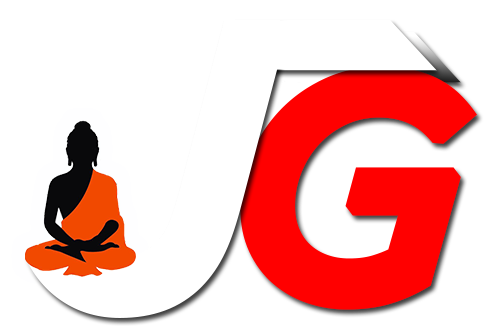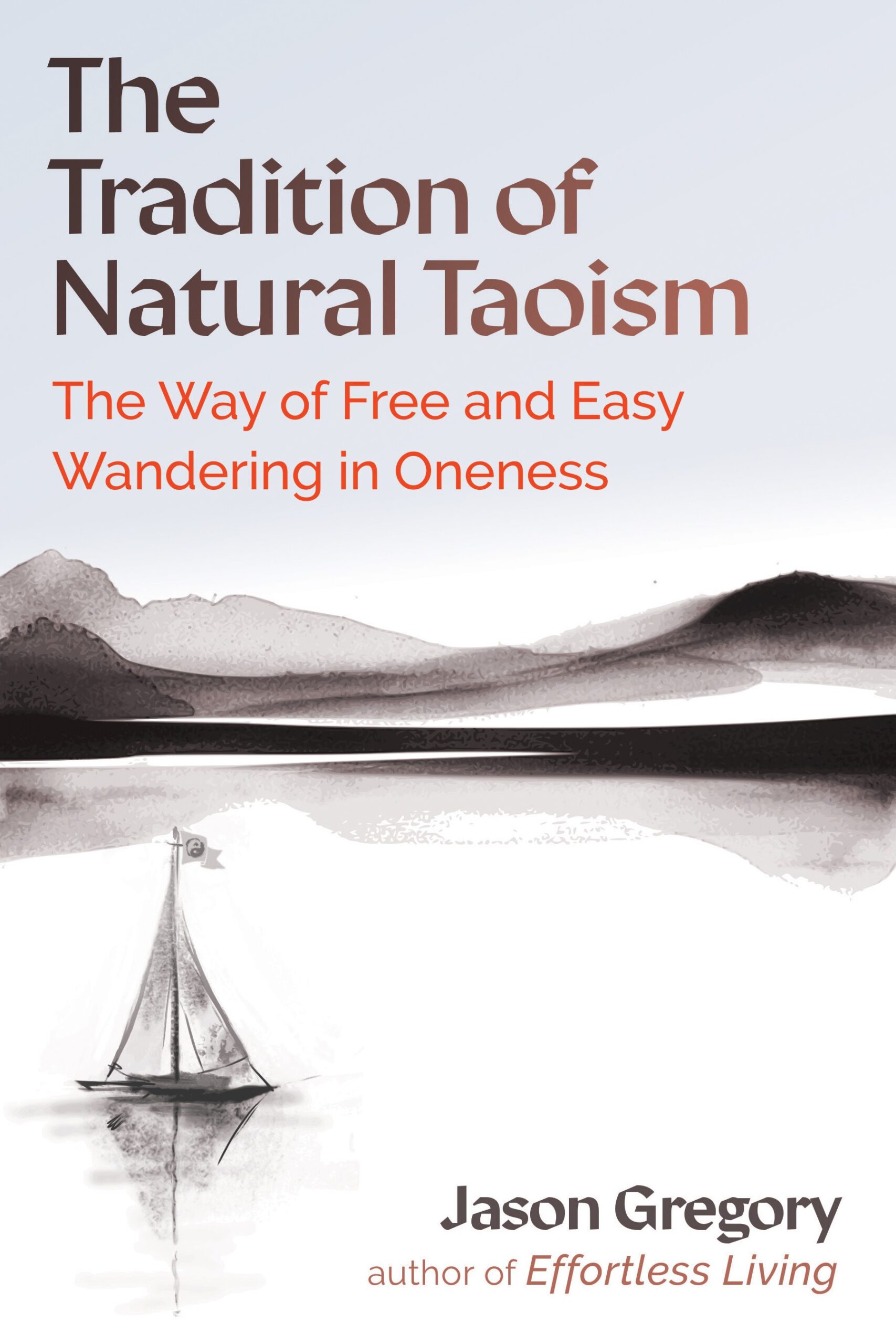Epilogue – Nepal Tour 2024

Epilogue – Nepal Tour 2024 We just completed the Footsteps of the Himalayan Yogi Nepal tour with seven beautiful souls. What an amazing journey into the sacred heart of the Kathmandu Valley. It is a privilege to take people to the places that we love so that they too can connect with the ancient spirit of Nepal. We explored Shiva and Buddha’s divine valley of the gods in the Himalayas tracing the footsteps of such masters as Dilgo Khyenste Rinpoche, Tulku Urgyen Rinpoche, Tilopa, Naropa, previous incarnations of the Buddha, and many other sadhus and siddhas of ancient times. No matter whether it was being absorbed in aarti at Pashupatinath, engrossed in the subtle energy of Swayambhu, or in meditation at Namo Buddha, the group dived head first into the unknown and embraced the experience. It brought me tears of joy to see some of the participants overwhelmed with tears of divine love at places such as Swayambhu, for example, early in the morning. Every time I visit Swayambhu, I am also overwhelmed with tears, and so it was an honor to facilitate that same spiritual experience for others. On these pilgrimages, even though the places we visit have an intense energy only for those who are ready to experience these sacred spaces, it is the journey together and connection we build as a group that is the real jewel in the lotus flower. Every time on these tours, people come as strangers and leave as brothers and sisters. The connection is something quite difficult to quantify, but it is there nevertheless. Maybe it is a sacred thread reconnected between us by going on such pilgrimages together so that we realize that when we trust each other with no sense of egoic resistance and take people for who they are, there is a power in that acceptance that reveals the superficial differences people cling to is a fundamental illusion. Such is the power of the pilgrimage and the courageous pilgrim. On a personal level, these tours never get old for Gayoung and myself. The tours are like this peak experience, or should I say a shot of spiritual adrenaline, that shows how life could be if we just get out of our own way and allow life to be what it is while embracing our innate adventurous spirit into the uncertain wilderness we call life. No words can express how grateful we are for the people who joined us on this journey, but we do wish to send all our love to everyone for being there with us. In alphabetical order, I would like to send our love and appreciation to Chris, Dara, Matt, Mike, Ross, Scott, and Srini. We love and appreciate all of you. Thank you for entrusting us with your hearts to guide you on this journey. With the blessings of Shiva and Buddha, we all allowed the pilgrimage to soften our minds so that we could leave Nepal as one in the heart the divine. OM NAMAH BUDDHAYA!!! OM NAMAH SHIVAYA!!!
The Cult of Comparison in the West
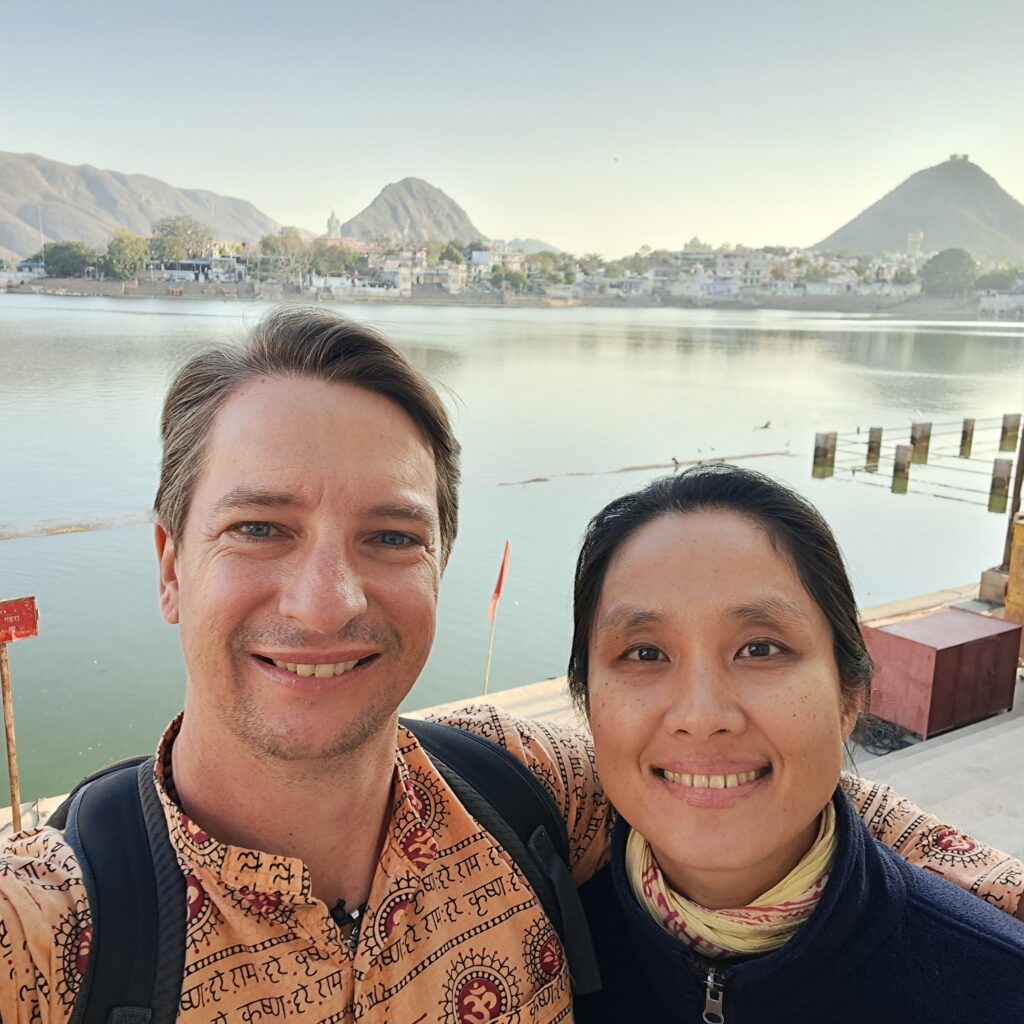
The Cult of Comparison in the West People in the West often cry and whine about some perceived privilege others have. But not in India and many countries throughout Asia. This cult of comparison has infected the hearts of many in the West, which is a special type of sickness stemming from a trained tendency towards competition and comparison. What an immature society and culture we have created in the West, so sick with jealousy and envy. But, astonishingly, there is always an insane justification for such a mental illness for those infected by this disease. Luckily, as I said, places such as India generally are not victims of such immaturity. In contemplating this cult of comparison, I think about my restaurant waiter friend in Pushkar. He is quite the character. Every day when I would see him, I would ask how he was doing. He would always reply, “This is a perfect life.” Some may say, How can he be so content “just” being a restaurant waiter? Well, he wasn’t sold on the illusion of the American dream, where one must be “special” in order to be validated by others and society at large. Isn’t it silly that we feel we need to be validated by the world instead of being content with who we are naturally? Often, those who work their whole lives to gain that validation realize that it is not an American dream but rather a nightmare, and the torture on their souls in chasing this illusion leaves scars on their hearts that, in most cases, are irreversible. My friend, on the other hand, doesn’t even know what the American dream is and has no idea that people outside of India try so hard to be noticed and validated. He can’t grasp the concern about trying to be special. His contentment arises from not having such illusions drilled into him daily by a society and culture that does not care for you. He is not “just” a restaurant waiter but rather a brilliant restaurant waiter. He doesn’t need millions of dollars, loads of unnecessary material possessions, or validation from others. Why? Because he is content with his plight in life, and nothing is more fulfilling than being content with where you are in life. He has no idea of specialness, so, as a result, he has no desire to be somebody special. He is not looking over the fence or scouring the social media feeds for what others have and what he apparently lacks because he has no desire to measure his life against others. His liberated content state of mind we can all have if we accept where we are in life, and if that needs to change, then do something about it rather than measure your life against others. Take ownership of your life and realize that in most cases, a lotus flower indeed grows out of the mud, but that doesn’t make that lotus flower special; rather, it has its own unique path in life if you allow your life to grow as it intended without comparing your path to others. These are the lessons one can learn from being away from cultures that continually promote lack due to the preposterous idea that you are not good enough. But when you realize you aren’t more special than anyone else, you realize you are good enough as you are and that this is truly a perfect life when you stop complaining about privilege and comparing your life to others. When you stop complaining or see no need to complain like my friend, then you come to the realization that the real privilege is to be alive and breathing in this moment together. What a blessing we all have to be graced with the amazing lives we share together, exactly in our right place, as naturally ordained by the Ultimate. SHARE
A Short Essay on My Return to India

A Short Essay on My Return to India Arriving back on sacred land in India has been a breath of fresh air. It is wonderful to be absorbed in a traditional culture not bound by silly divisive ideologies that confuse innocent minds with an insane political correctness that consequently divides society, contributing to no peace and harmony in the world. Being back has truly shown me how confused the West actually is. India, on the other hand, which is one of the most unwoke places in the world, along with all of South Asia, Africa, and the Middle East, still reflects our true human nature and is not overly influenced by the illogical moral flavors of the time that are driven by the tech companies and investment firms of the West. Many outside forces have tried to shape and bend India to their will, but she has always stood tall and never held a grudge. The people here are not mean-spirited but instead warm and loving and accepting of all, since the nature of Sanatana Dharma (Hinduism) is a pluralistic tradition. A real sense of oneness is embodied by the people from birth. Just the other day, I was having a conversation with my waiter friend at one of my favorite restaurants in Chennai, and he was confused about all of the superficial divisions in the West. He simply summed it up this way for me: “Differences in appearance are illusory. We are all one blood. We are all a part of Shiva.” This is the common mentality in India and why there is still an overwhelming sense of community here. People live from the heart, look each other in the eye, and do the patent Indian head wobble, and the smile you receive is something indescribable. That smile is a real indication that we are one and all is good, no matter what the media or other divisive entities try to indoctrinate you with. Being back in India has been overwhelming for me at times, moving me to tears because she is truly my home. It’s only been 3 days and I’ve done more in 3 days than I did in 5 years in Australia. I’ve never really given Chennai a chance when in India, but I’m glad I have. I visited the great Kapaleeshwarar Temple, the Theosophical Society HQ in Adyar, and had some quality meditation time at the famous Ramakrishna Math Temple, while paying respect to Sri Ramakrishna, Swami Vivekananda, and the holy mother Sri Sarada Devi. Everything about being back is wonderful. India really hits you in the face with its spiritual nature. Your senses are turned on 24/7. The sights, sounds, and, my God, the people, really make you feel alive. If you are in a part of the world where you are made to feel isolated from it, then India is for you. If you are interested in normalcy and have honor and respect for how humans truly are with no politically correct BS, then India is for you. If you want to truly understand that we are one and start to feel that true oneness in your heart, then India is for you. For these very reasons, and many more, India is negatively portrayed in the West. India abolishes the Western motto of “divide and conquer.” Only the foolish fall for such nonsense, but India will wake up the most hateful and confused hearts. India has allowed the world to be as it is with no interference and actually accepted other cultures and religions because that is her nature, the true mother of the world. It is a home to all, but one must respect her nature, and her nature is Sanatana Dharma, the eternal natural way that a lot of the world has unfortunately forgotten. That is why she has been a great blessing to both Gayoung and myself in our lives. Everything I do is because of the knowledge that arose in the heart of her sacred land, and actually Gayoung started playing the violin on the banks of Mother Ganga in Varanasi some 13 years ago, which I must say is the most odd place to start your violin journey, but that is the mysterious nature of India. To experience her with my love, Gayoung, is something I am beyond grateful for and no words can describe. I truly hope you can all make it one day, and maybe I’ll see you around. As for the immediate future, I will be taking a small break from YouTube and other media commitments on our way home to Tiruvannamalai, to be in the grace of Arunachala. I will try to take you all along on the journey when I can. Until then: Om Arunachala! Om Namah Shivaya! Bharat Mata Ki Jai! SHARE
Honoring the Life of Thomas Cleary
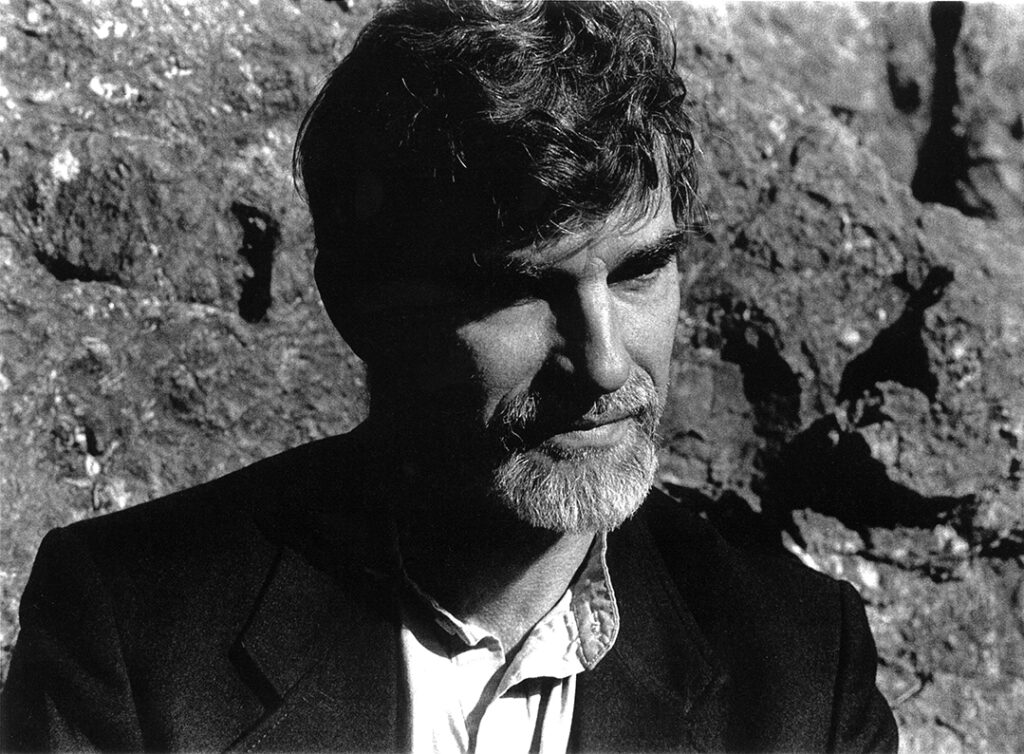
Honoring the Life of Thomas Cleary The news of Thomas Cleary’s passing was unexpected and saddened me deeply. Not because I knew the man personally, but because the world lost someone special, someone genuine in an age of inauthenticity. He was surely one of the greatest men you’ve never heard of. You’ve probably enjoyed reading The Art of War by Sun Tzu, or wanted to read more about the authentic knowledge of Buddhism and Taoism, and thankfully there’s abundance of knowledge on those traditions available. But the likelihood that you read a Thomas Cleary translation of those ancient texts is highly probable. Without a doubt he was one of the greatest translators of our time. American Buddhist author and academic, Robert Thurman said of him: “There is no doubt in my mind that Thomas Cleary is the greatest translator of Buddhist texts from Chinese or Japanese into English of our generation, and that he will be so known by grateful Buddhist practitioners and scholars in future centuries. Single-handedly he has gone a long way toward building the beginnings of a Buddhist canon in English.” He translated a vast library of Eastern spiritual texts and had an innate gift for extracting the beauty of many different languages into English. Thomas translated eighty works into English from Pali, Sanskrit, Chinese, Japanese, Bengali, Arabic, and Old Irish. He really could do it all. His work spanned a vast array of subjects and classics, including Buddhism, Taoism, Hinduism, ancient Chinese classics on strategy and power, martial arts, Greek wisdom (translated from the Arabic), the great works of Sufism and Islam, including The Qur’an, and more. His books have sold millions of copies and touched the hearts and minds of millions more. His best-selling books include The Art of War, The Book of the Five Rings, the I Ching and many others, some of which I’m sure you’ve read. Regarded as his magnus opus, and one of the most daunting books you will ever read at 1600 plus pages, is The Flower Ornament Scripture, a classic Mahayana Buddhist text known as the Avatamsaka Sutra. The Flower Ornament Scripture is widely considered a masterpiece. Upon reading this text, I often wondered how long it took him to translate and write it. Only those close to him would know the magnitude of the feat he accomplished. His library of translated works, especially in Buddhism and Taoism, are so vast that they have also been condensed into extensive volumes: Classics of Buddhism and Zen in five volumes and The Taoist Classics in four volumes. Seriously, clear out a few years to read these volumes, but I can guarantee that you’ll be a completely transformed person at the end of the process. Some of my own personal favorite books by him are The Sutra of Hui-neng and Awakening to the Tao. I was extremely impressed with both of these books. My first encounter with his work was when I was a lot younger, like most through The Art of War. However, it was in 2009 when I became an admirer of not only his work, but the man himself. While living in Kathmandu, Nepal in 2009, I discovered my two of my favorite book shops in the world, the Tibet Book Store and Pilgrims Book House. But it was the Tibet Book Store that brought me closer to Thomas. The Tibet Book Store is a paradise for someone like myself. Forget beaches and martini’s, give me sacred Eastern knowledge at my fingertips any day of the week. When you walk into the Tibet Book Store it is steeped in spirituality, with the great texts of Buddhism, Taoism, and Hinduism everywhere from floor to ceiling. When you are in there, you can’t escape Thomas’s influence because his books are everywhere. Every time I visit the Tibet Book Store, I find myself with a Thomas Cleary book in my hand as I peruse the pages in delight. I felt a great sense of comfort knowing that Thomas Cleary was out there doing the great work for us mere mortals. Seeing his books everywhere in the book shop always restored my faith in humanity and made me optimistic for the dissemination of Eastern spiritual knowledge for future generations. When I would see someone pick up one of his books for the first time, I knew they were in good hands. I have returned to Nepal many times since then and the feeling has never changed. Some of my happiest moments in life are eating breakfast and drinking a masala chai in the morning with my lovely wife Gayoung at one of my favorite restaurants in the world called Gaia and then straight after breakfast we’d go to the Tibet Book Store to explore many books, such as the works of Thomas Cleary. For myself, life doesn’t get better than that. I have learned so much from him over the years, his scholarship and wisdom have helped my writing and work mature. And yet, who was Thomas Cleary? Not many people knew. For myself, it wasn’t his work that impressed me the most but rather the person he was. Knowing he was in the world, walking among us, made me feel a great sense of relief. For those reasons and many others, I tried to make contact with him for over a decade but he was definitely the hardest man I’ve ever tried to track down. He had no website, no email that anyone knew, and even his publishers were ordered by Thomas not to give out his contact details. He was an extremely private person and this is what impressed me the most about him. He was one individual that deserved all sorts of accolades and recognition, but he decided to live the quiet life. It was as if he was the living embodiment of the Buddhist hermit or Taoist recluse. He lived by what he translated. This impressed
My Top 5 Books of 2020
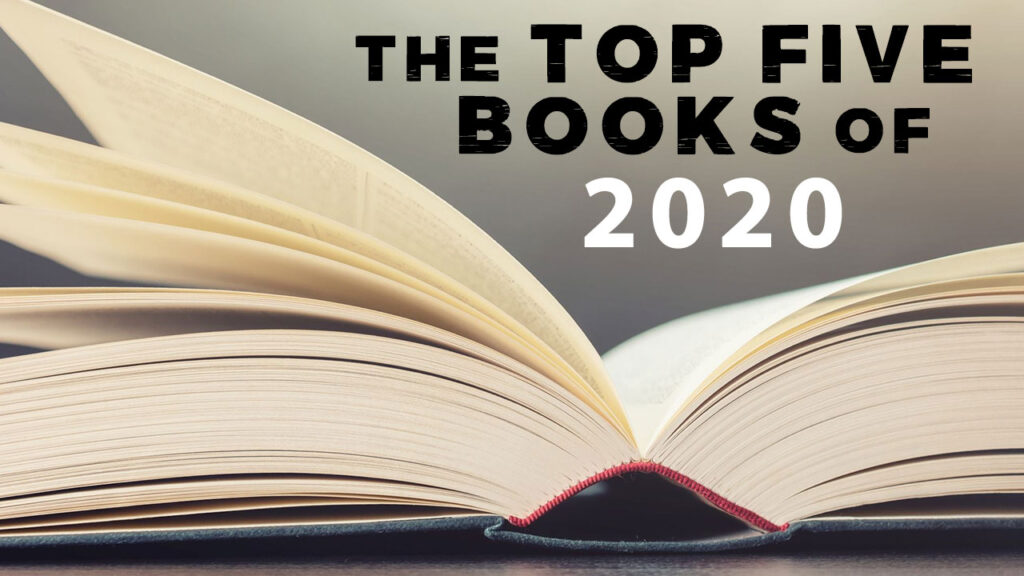
My Top 5 Books of 2020 2020 was an amazing year for books. There were so many great new releases and my new book Emotional Intuition for Peak Performance was published as well. But for myself personally, I reverted back to the classics and read some new translations of texts that I am very familiar with. Usually there will be an odd book in my top five that has nothing to do with Eastern spirituality and philosophy, but this year my top five is strictly books on Eastern spirituality and philosophy. My list of 2020 are books that will give you a deeper understanding of the great traditions and, of course, life and your true nature. Please leave a comment below and tell me which books you read this year and any you would recommend. Without further ado, here is my top 5: Hua Hu Ching: The later Teachings of Lao TzuBy Hua-Ching Ni The Hua-Ching Ni translation of the Hua Hu Ching is in my opinion the best. He encapsulates the cultural nuance that surrounds the text and Taoism itself more than other translations. The text itself is brilliant. I believe that this stands alongside the great Tao Te Ching and in some sense is an extension of its teachings. One problem many scholars and Taoist purists have with this text is that it delves into concepts such as reincarnation. This makes many believe that the Hua Hu Ching is not really a later teaching of Lao-tzu, but rather a combination of Taoism and Buddhism created by later cultures. We can see why some would be concerned, but I don’t share the same concerns. What the Hua Hu Ching does best, is it explains some of the finer details of Lao-tzu’s teachings whilst introducing such concepts as reincarnation. Though, keep in mind that reincarnation is often considered as an original Taoist concept and not something that was imported with Buddhism. Nevertheless, this text is a must have for any serious Taoist or spiritual seeker. It explains thoroughly the relationship between the Tao and a human being. BUY HERE (affiliate link) Self-Knowledge (Atmabodha)By Swami Nikhilananda The Atmabodha is one of the greatest texts from the great Advaita Vedanta sage, Shankara. In my opinion, Self-Knowledge could be Shankara’s best work, even more so than the Vivekachudamani. He explains in fine detail the nature of Atman (undifferentiated consciousness) and Brahman (the Ultimate Reality for which Atman is identical). This is why the text is called Self-Knowledge, meaning Self with a capital S to denote the Atman which is Brahman. This Self is our true nature, but the problem is our ego becomes our ordinary initiator of consciousness which eclipses our recognition of our true nature. Self-Knowledge acts as a remedy for this hypnosis. As Shankara explains in the text, it is all well and good to practice Bhakti yoga (loving devotion to a deity) and Karma yoga (selfless and unselfish action), but if you don’t practice Jnana yoga (path of knowledge and abidance in Brahman) then you won’t have knowledge of the Self, which is why we are all born in the fist place according to Advaita Vedanta. What makes this particular translation special is Swami Nikhilananda’s introduction. Personally, I find his translations the best when it comes to Vedanta, but his introduction in this book runs to page 114 and it is a deep teaching on Advaita Vedanta, one of the deepest actually. He explains almost everything anyone needs to know in 114 pages. This text is a must read for anyone interested in understanding their true nature. BUY HERE (affiliate link) Zen: The Authentic GateKoun Yamada There are many books I’d recommend for anyone new to Zen Buddhism. But what sets this book apart from the rest, is I’d also recommend this book to advanced practitioners as well. It is for both beginners and those who have walked the path for many years. Koun Yamada has an amazing ability to synthesize the most complex aspects of Zen into a language we can all understand and benefit from. What makes this book extra special is that Koun Yamada was the leader of the Zen sect known as Sanbo Kyodan, which is a combination of the two primary Zen schools, Rinzai and Soto. So when he teaches Zen, he explains it from the perspective of both schools because they are synthesized into Sanbo Kyodan. In this book, he explores the suffering of the world, the philosophical tenets of Zen, and also how we should practice to become natural again. This is one of the best books on Zen Buddhism, period. Koun Yamada has left behind for all of us a treasure trove of wisdom that will help our understanding of what it means to be Zen. BUY HERE (affiliate link) The Mandukya Upanishad with Gaudapada’s Karika and Shankara’s CommentaryBy Swami Nikhilananda The Mandukya Upanishad is one of the greatest texts in the world and the most important if you want to understand Advaita Vedanta. It is an intense teaching on nonduality. It reminds us constantly of our nondual nature which reveals how much of our lives is lived in dualistic thinking. But this translation by Swami Nikhilananda is special. As with his other translations, he has a great knack for explaining the depth of the teachings and making them accessible to anyone. His translation of the Mandukya Upanishad, Gaudapada’s Karika, and Shankara’s commentary are second to none. One of the reasons this particular text is important is because of Gaudapada’s Karika and Shankara’s commentary. The Mandukya Upanishad on its own is wonderful, but with the help of the two great Advaita Vedanta sages, Gaudapada and Shankara, we learn the true nature of ourselves. Both made the Mandukya Upanishad accessible from their time until now. What was once a mysterious text hard to understand since the era of the Upanishad’s, is now a great teaching we can understand if we let our ego go. We can thank Gaudapada
My Top 5 Books of 2019
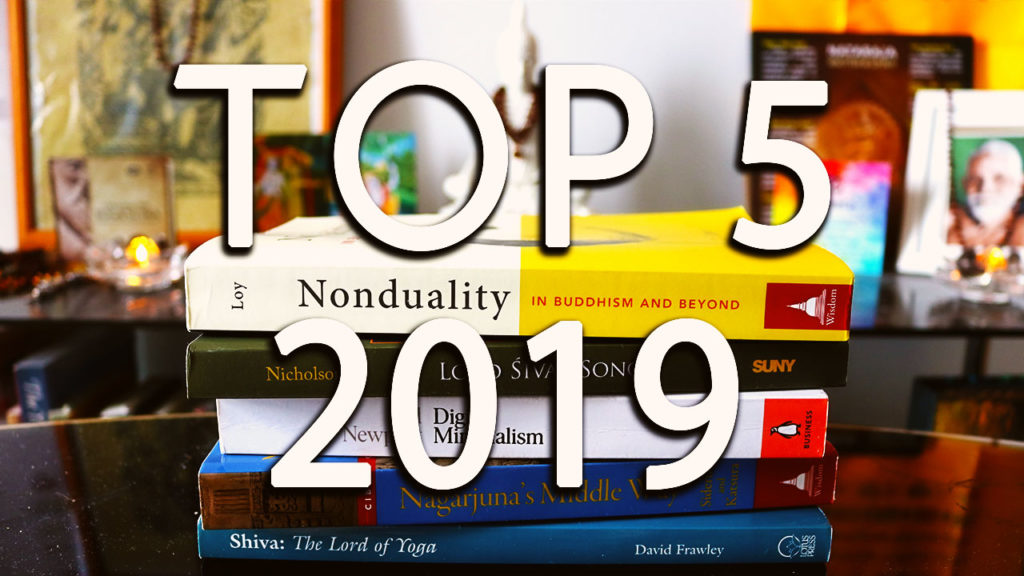
My Top 5 Books of 2019 So it’s that time of the year people, my top five books of the year. In 2019 I reverted back to some of the classics in Eastern philosophy and many other books I had put on the back-burner for a few years. Nevertheless, I finally got around to reading some important books this year that I probably should have many years ago. But the wait was worth it. A few of the books I read this year are high on my list as the best books I’ve ever read. Below are my top five books for 2019. I feel that you will benefit a lot from my list this year. Also leave a comment below and tell me the books you’ve read this year, maybe there is a book you would like to recommend. Or maybe you read one of my books? Below is my top five: Nonduality: In Buddhism and BeyondBy David R. Loy David R. Loy has produced an epic tome of nonduality within the great Eastern spiritual traditions. Nonduality is the best book I’ve read in the last five years. It is scholarly, mind-blowing, and enlightening. Some may say that might be due to my focus on nonduality in my work. But I can say with confidence that even if I was new to the subject, this book would give me a thorough understanding on the subject and transform my life. But I am not saying that it is for a beginner, it is an important book for anyone no matter how familiar they are with Eastern philosophy and nonduality. The book itself is a gem and goes further than any other book before it. Loy explores the great nondual traditions, especially Advaita Vedanta, Buddhism, and Taoism, as well as the dualistic schools of Samkhya and Yoga. He thoroughly analyzes these traditions so that the reader can better understand the differing philosophical views on the subject-object relation at the core of these Eastern schools. On top of this, Loy explores the nature of nonduality itself and why we are accustomed to thinking dualistically. He tackles this through delving into the nature of nondual perception, nondual action, and nondual thinking. He makes a great argument that our perception is naturally nondual, and after you understand how nondual perception, action, and thinking operate, then you may too. But this book goes above and beyond to explain nonduality as our natural function of mind. The cognitive error of seeing yourself as independent and separate from the world will begin to dissolve when you explore the nature of nonduality within the great Eastern traditions. This book is where you will begin your journey and also the destination you’ll arrive at, as is ironically the case with the nondual nature of life. Lord Siva’s Song: The Isvara GitaBy Andrew J. Nicholson The Isvara Gita is not only one of the most important texts for followers of Shaivism and Advaita Vedanta, but it is one of the important spiritual texts period. I have heard that it rivals the famous Bhagavad Gita. I was skeptical, but pleasantly surprised. Actually, I’d go so far to say that you could make an argument that it is even better than the Bhagavad Gita, considering its constant focus on the knowledge of Brahman without too much deviation. Some may say it is sacrilege to compare either text, especially since the Isvara Gita is a later text that shares many concepts and themes with the Bhagavad Gita. But the Isvara Gita expands on many philosophical ideas that were merely hinted at in the Bhagavad Gita (the concept of Maya being one example). Some of these more difficult philosophical ideas in the Bhagavad Gita are at the forefront in the Isvara Gita because the text teaches that renunciation accompanied by yoga is the highest way to Brahman (Shiva as the representation of the absolute Brahman). The Isvara Gita, then, is for Brahmin renouncers and those interested in metaphysics, while the Bhagavad Gita is for householders and worldly people (though we could argue that with sincere dedication both paths may end up at the same knowledge of Brahman). Andrew J. Nicholson explores this in far more depth in his introduction. Actually, his introduction is worth the price of the book alone. It is one of the most scholarly and insightfully wise contemplations on the differences between differing Hindu texts, spiritual practices such as yoga, and philosophical concepts. In my opinion, Nicholson is one of the foremost scholars on Hinduism in our modern world. I regard his scholarship as equal to great scholars of the past, such as Georg Feuerstein. On top of his introduction, his translation of the Isvara Gita brings out the essence of this great text like no other before him. His translation makes it a joy to read, but also makes it more clear for everyone to come near to an understanding of this great text, where one arrives at the real knowledge of Brahman. I have many favorite ancient texts, but the Isvara Gita is now in the upper echelon of great texts. So much so, that if anyone asked me which texts they should take on a long-term spiritual retreat, I’d say without hesitation the Isvara Gita. Digital Minimalism: Choosing a Focused Life in a Noisy WorldBy Cal Newport I always enjoy reading Cal Newport’s work, and this book is no different. Just like Jaron Lanier, he has contributed to a growing number of titles that are revealing the pitfalls of the digital world and how it is negatively impacting the human mind. It was important for myself to read this book because of one of my future titles that goes deep into the damage digital technology and social media are having on our psychology, leading many to a form of insanity that is not recognized in the world. I learned a lot from Cal’s book and
My Top 5 Books of 2018
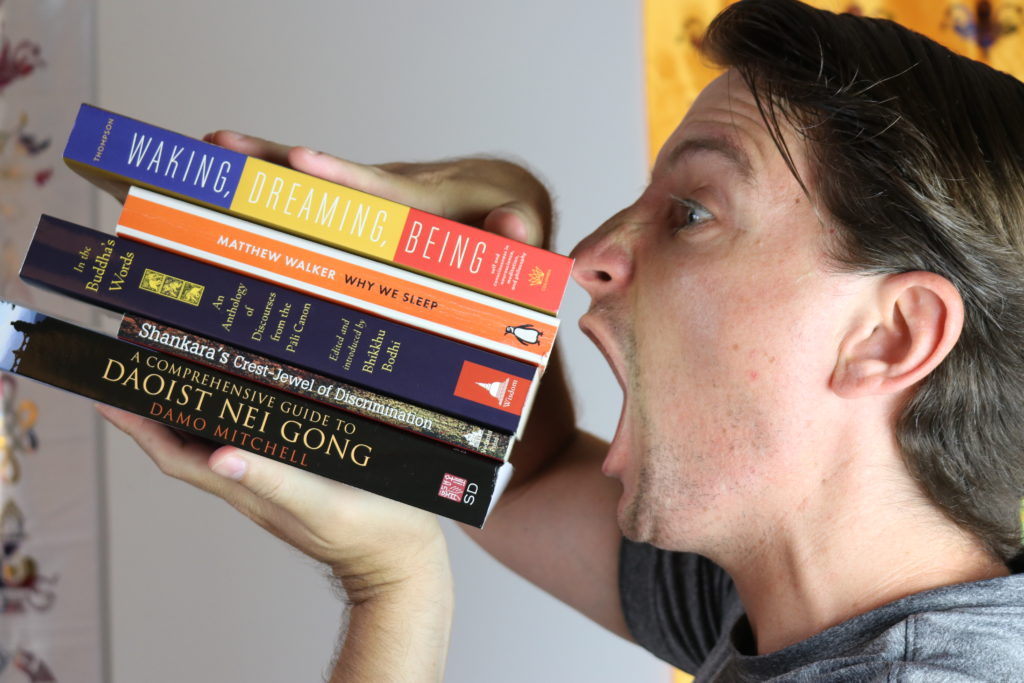
My Top 5 Books of 2018 There were so many superb books in 2018 but enough time to get through all of them. And I’m not one to waste time, so that means there were a truckload of great books. Many in-depth books on consciousness studies surfaced in 2018, along with some breakthrough books on spirituality, philosophy, psychology, and optimal performance (including my own book Effortless Living). Last year I mentioned to you how I aspire to read at least 10 books a year and explained that you should also try and hit the target of 5-10 books, as this shows you have not been wasting your time on things that don’t matter. Instead you have invested in yourself. Please let me know in the comments section if you reached this target. Without further ado here are my top five books of 2018 (not all published in 2018). Waking, Dreaming, Being: Self and Consciousness in Neuroscience, Meditation, and PhilosophyBy Evan Thompson This is one of the most unique and important books of our time (and maybe beyond our time). I discovered this book in a most unlikely place, it was recommended by Swami Sarvapriyananda. You would never think a Hindu Swami would recommend a book on Western neuroscience. But this is what makes Thompson’s book different to the rest. Thompson himself was brought up on Eastern philosophy, especially Buddhism. But the link between Sarvapriyananda and Thompson is that in Waking, Dreaming, Being the organizing principle comes from the first recorded map of consciousness found in the ancient Indian texts known as the Upanishads. According to the Upanishads there are four states of consciousness. There are the common states of waking, dreaming, and dreamless sleep, and then there is the fourth states of pure awareness (turiya) which is found in the Mandukya Upanishad, arguably the most important Upanishad for that fact. This idea of pure awareness pervades Eastern thought, even Buddhism. Modern science, and most people in general, assume that consciousness has a biological origin, most likely in the brain. But contemplatives in the East have studied consciousness for thousands of years and believe that pure awareness is not located in our brain, it has no physical origins (what philosopher David Chalmers calls the “hard problem” of consciousness). This is where Thompson’s experience as a Western philosopher and scientist along with his years of studying the great Eastern traditions are all beneficial. He goes into detail and makes a claim for both sides, is the idea of pure consciousness still a phenomenon of the brain or is it beyond the physical world. In the end, he offers some of the most unique research and insights on the subject of pure awareness in Eastern philosophy. Why We Sleep: Unlocking the Power of Sleep and DreamsBy Matthew Walker This is one of the most important books for the modern busy world, especially in regards to our health and sanity. Too often people will neglect their sleep to be more successful and get more done. But all this actually does is diminish your chances of being successful and getting more done, as Matthew Walker scientifically points out in his book. People never associate their stress and illnesses with a lack of sleep, as this is an area of research that has been avoided for far too long. Thankfully, Walker has taken the time and effort to scientifically prove to us the benefits of sleep for our health, sanity, and longevity. After reading his wonderful book, you will have no other option but to prioritize your sleep because it is the foundational pillar of everything else we experience in life. As Walker suggests, don’t be afraid to drift off to sleep while reading. It is normal to rest and sleep, don’t fight it. In the Buddha’s Words: An Anthology of Discourses from the Pali Canon (The Teachings of the Buddha)By Bhikkhu Bodhi This is the foundational text for Buddhist studies and for those who practice Buddhism or are interested in learning. It is the most important Buddhist text to read for any school of Buddhism because it is the original Pali Canon, the actual discourses of the historical Buddha. This book gives you an insight into early Buddhism and the Theravada school of Buddhism. Most people will likely not start with this book when they begin their Buddhist studies, but in an ideal world this book would be the first book you should read on Buddhism and the Buddha. This book will give you a taste of what it is like to read the ancient suttas (sutras) with their unique repetitive style (this may be laborious for those unfamiliar with the sutta repetitive style). And Bhikkhu Bodhi has done a tremendous job with the translation and commentary which makes for an enjoyable and enlightening read. All of his translations sparkle with clarity and wisdom, but none so more than this amazing book. So if you are interested in the wisdom of the Buddha then begin here to build a solid foundation for your future studies. Shankara’s Crest Jewel of Discrimination (Vivekachudamani) By Swami Prabhavananda Shankara’s Vivekachudamani (Crest-Jewel of Discrimination) is a pure transmission of the nondual teachings of Vedanta. In some sense, Shankara lays out the nondual teachings of Advaita Vedanta more clearly for everybody than the Upanishads, Bhagavad Gita, and Brahma Sutras. This is because not everybody can grasp the mystical depth of the three main texts of Vedanta. But even though the three main texts of Vedanta are more more important to read and contemplate long-term, the Vivekachudmani is an extension of them and a great explanation of them, especially for people new to Vedanta. Shankara had a wonderful ability to see into the heart of Vedanta and bring back this jewel of wisdom from the eternal ocean of Brahman to the shores of our world. A Comprehensive Guide to Daoist Nei Gong By Damo Mitchell Back in 2015 in my home in Tiruvannamalai and then
Best Books for Studying Yoga
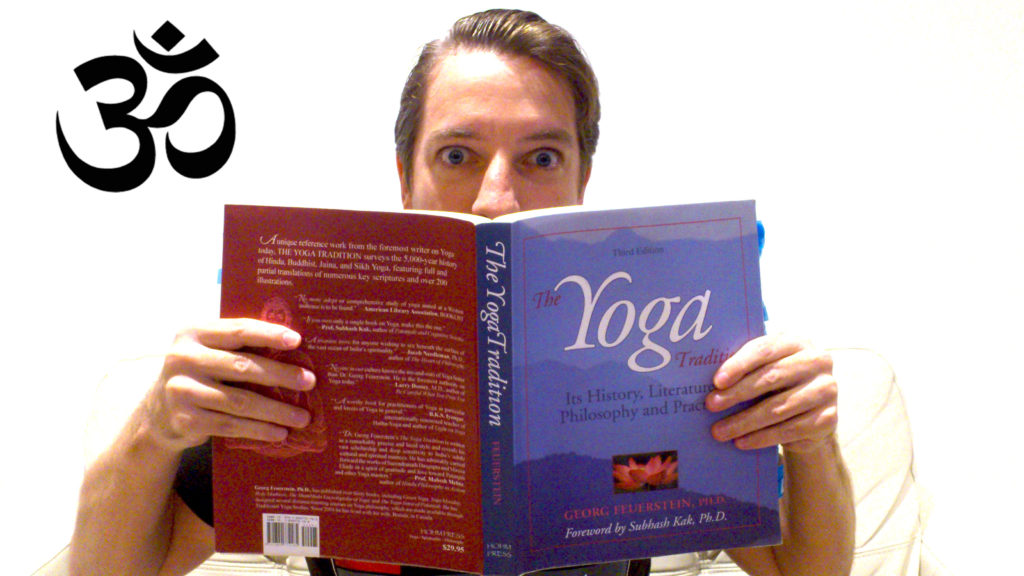
Best Books for Studying Yoga I find it disappointing that when most people hear the word “yoga” they think of an exercise routine that is focused on stretching the body, making one more flexible. I’m sorry to be the bearer of bad news, but that’s not yoga. That idea of yoga results from the cultural appropriation it went through when it went to the West, especially in places such as America. That version of yoga is a poor replica of the traditional hatha yoga which is only one branch of yoga. Actually, there are seven main paths or temperaments of yoga known in Sanskrit as hatha, mantra, tantra, karma, bhakti, raja, and jnana. Yoga is not asana and in actual fact the word asana literally means to sit or seat, revealing that the first yoga posture is sitting meditation. So, yoga is not an exercise routine where we wear skimpy tight clothes which is all too egocentric. Real yoga is about dissolving those tendencies to be egocentric, which includes our urge to be physically attractive. Yoga is a system of knowledge designed to liberate you from the idea of an isolated and separate ego so that you can reunite with the divine. The word yoga comes from the Sanskrit root yuj which means to yoke, unite, or join with the absolute Ultimate Reality (Brahman) beneath all the energy and movement of duality in the universe, known as prakrti in Sanskrit. At its core, then, yoga is a dualistic philosophy where we are supposed to break free of the gravitational pull of all the energy, including thoughts, and movement in the universe (prakrti). The way this is done is by coming back into resonance with your innate pure awareness (purusha in Sanskrit) which unites you with the Ultimate Reality, Brahman. Pure awareness is the root of our consciousness and the main principle of all forms of yoga. Patanjali, the founder of classical yoga, believes that the evolutionary aspect of mind, citta in Sanskrit, is to refine our mind back into its original state of pure awareness. Our mind (citta) is wound up in the vortex of energy and movement in the universe (prakrti). The goal of yoga is to unravel our mind from this turbulence. This is done by coming back into resonance with pure awareness, where it is said that eventually you will develop a gap between prakrti and Purusha, meaning you will be able to look on the world of form from a distance without being moved by the activity of the world. This is liberation in yoga and what all honest yogini’s and yogi’s should be striving to achieve. I will recommend the best books for you to achieve this liberated state and to further your understanding of yoga, and also how to apply it to your life. To build a foundation for understanding yoga I suggest first reading The Yoga Sutras of Patanjali. This is the foundation of yoga from the great master Patanjali. In an ideal world, I always say that it is best to read the classics first to get your head around the actual philosophy and practice. The Yoga Sutras of Patanjali is no different and I class it as one of the greatest classical texts on the planet (definitely top five). There are so many translations on the market and a lot of good ones. But I will give you my personal favorites. My favorite translation is by Chip Hartranft. His translation of The Yoga Sutras of Patanjali is translated for the modern mind but keeps its ancient beauty. I’ve read his version many times and it always plunges me deeper to reveal more about the nature of self and the universe. The second translation I recommend is by Swami Satchidananda. His translation of The Yoga Sutras of Patanjali sticks more to tradition but is very lucid and profound. It really is a showcase of how great Swami Satchidananda really was. He was one of the most honest and brilliant gurus to have graced our earth in recent history and his translation reflects his greatness. These two translations are even better when they are coupled together. Outside of The Yoga Sutras of Patanjali, the most important book on yoga is The Yoga Tradition by Georg Feuerstein. Georg Feuerstein is the greatest scholar and teacher of yoga you’ve never met or heard of. A lot of his work is criticized because of how intelligent and scholarly his writing was. But he should not be criticized for the genius he was. Actually, the onus and responsibility is on the reader is to be more intelligent and that can come about by reading his works (also criticizing someone highly intelligent because you can’t understand is an act done by those less intelligent). As for yoga, all of his works are unmatched. Even his translation of The Yoga Sutras of Patanjali is brilliant. But it is The Yoga Tradition where his knowledge and wisdom really shines. As a writer, when I read The Yoga Tradition I am in awe of how he could have wrote such a tome. In this book, Feuerstein takes you through the whole history of Hindu thought, not just yoga. He explores Vedanta, Samkhya, Jainism, and Buddhism in relation to yoga, which gives you the full scope of Indian thought. Though, if you do take the challenge and read this book you better be prepared because it is a behemoth. This is why it is sometimes referred to as the “yoga phone book.” But if you are serious about yoga then this book cannot be avoided. And you won’t regret it because it is full of insights and traditional knowledge on yoga. Another book I recommend is by Feuerstein again. It is called The Psychology of Yoga. You should read this book after The Yoga Tradition. It was the last book Feuerstein wrote before he passed away in 2012.
Learn to Say NO and Get to Work

Learn to Say NO and Get to Work I received an email from a budding writer. She asked, “How can I get so much done in so little time?” My answer was simple: Learn to say NO and get to work. Both are the two simple principles for creating meaningful content. Procrastination kills all artistic endeavors. The only way to slay that dragon is to get to work and guard your time because its the most precious resource we have. I’m anxious when I procrastinate, so I just get to work and see what comes to me naturally. I try not to overthink about what I want to create nor do I have illusions of grandeur. I just have a trust in the process of writing itself. I’ve learned that if you want to write, just sit down and shut up. Let the pen do the talking. Stop thinking about what you are going to do and just do it. Embrace the grind. Its better than doing nothing and telling people about what you are going to do. I’ve had many friends tell me their intentions and then they don’t back it up with actions. Nothing annoys me more than that, especially when they complain that their creative life is going nowhere. Your intention and action have to unite. This is why I don’t tell anyone what I’m writing about until I have finished. I’m currently writing my seventh book with my sixth book is in the bag. You’ll find out about both of these books when they are ready to be published. But all my work and my future projects (which I can’t tell you about yet because there is no actions to back them up) are built on learning to say NO. You can’t fulfill your creative juices if you are constantly meeting friends and family, playing with your phone, watching TV, surfing the Internet, or saying yes to every opportunity that goes your way. You need to say NO! Make it loud and clear so everyone gets the message. As a content creator, or an artist in general, large chunks of undistracted time is what you need. If you don’t cultivate this sort of creative isolation then you’ll create nothing meaningful. Think of all the great artists you have been inspired by, this is how they did it. It sounds nice to think that artists sit around coffee shops waxing lyrical about deep topics, but we don’t live in a fantasy world. It doesn’t mean an artist doesn’t love their friends and family, it just means they know what it takes to create meaningful art. Saying NO will give you the time to express your deepest nature, but you can’t sit around dreaming about it, you gotta get to work. We can all inspire the world with our own art by following these two simple principles. Do you have what it takes? Don’t be afraid to share your art and heart with the world. SHARE
Books for Studying Taoism
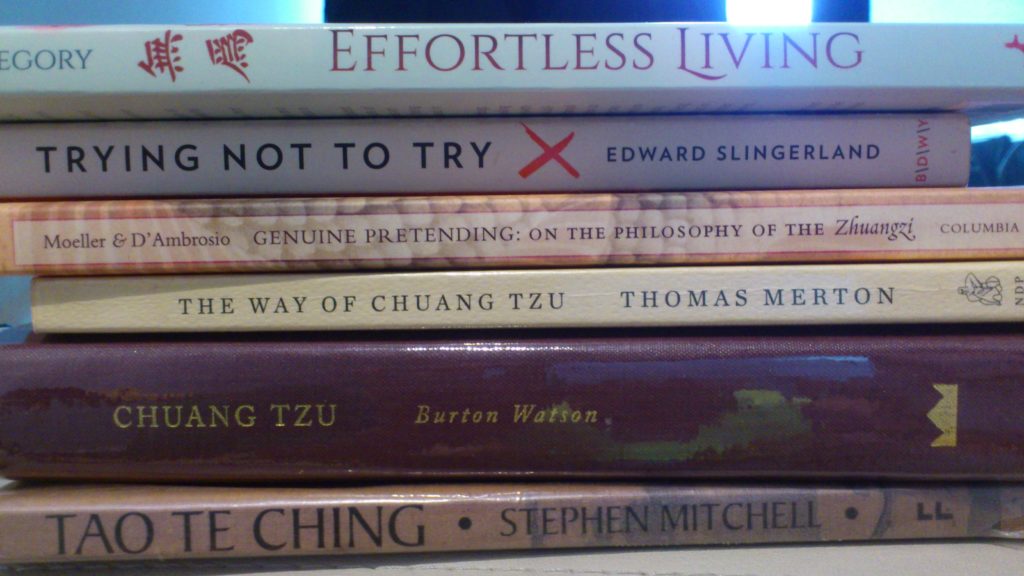
Books for Studying Taoism Taoism is a path often confused with being a conventional religion and primarily a form of spiritual cultivation concerned with martial arts and other Taoist arts. This is not completely untrue but its not the entire picture. All forms of Taoist spiritual cultivation and the religion are all based on its original philosophy going back 2,500 years to Lao-tzu and the Tao Te Ching. The problem with many modern spiritual movements is they have lost touch with the original philosophy of what they seek to practice and understand, modern watered down yoga is a good example. The Western version of yoga is just not yoga (watch my episode of Enlightenment Today on Yoga and the Eight Limbs of Yoga to understand the tradition). And this temperament is rife within those interested in Taoism. If you are not schooling yourself in the philosophy, or learning it in unison with your practice, then your practice will be handicapped. A human mind learns anything thoroughly when a framework for understanding has been studied. In regards to the Eastern spiritual traditions, it is best to study the philosophical framework from top to bottom so that your practice means something much deeper, so you can understand the intense process you are going through. Being absorbed in a spiritual process means we are in turn cultivating intelligence along the way. So it is not enough to go to a Taoist arts course, or your local yoga group, if we are just going to hang out with like minds and get distracted with mindless chit chat, turning the practice into a purely physical exercise or form of spiritual materialism. You have to throw yourself in the fire if you are serious about deep transformation. This means a lifetime of study when it comes to the spiritual traditions of the East. Though this shouldn’t be thought of as drudgery, but instead, it is an ever expanding joy you feel in your heart as those rich Eastern traditions will begin you to crack open your mind so it can blossom like a lotus flower. And to allow this transformation to bloom we need the right books to study. But I can tell you there are a number of books out there posing to be Taoist literature and then there are those that are authentic and sadly usually they’re the ones less read. To get a deep grasp of Taoism it is important to understand it in relation to the other great philosophies of the Warring States period of China. To understand the mind of Lao-tzu it is important to understand that period of time and the other sages that shared that time with him (if he did exist). One of the best books to understand the basis of Chinese thought is the Readings of Classical Chinese Philosophy by Philip J. Ivanhoe and Bryan W. Van Norden. Both Ivanhoe and Van Norden are esteemed scholars in the field of Chinese thought and have dedicated their lives to the study of its philosophy. This book includes all the classic texts of Chinese thought, including the works of Lao-tzu, Confucius, Mencius, Chuang-tzu, and more. This book is not just a great start but a great source book going forward. Even though Ivanhoe and Van Norden cover the classics in their anthology, it is good to get the classics on their own and some different translations to see some different scholarly perspectives. The Tao Te Ching is obviously imperative if you want to understand Taoism. There are a host of translations out there, some are authentic and some try to modernize the text. The second classic to study is the Chuang-tzu text. Some of the stories within the Chuang-tzu are something we could read in an afternoon but contemplate for a lifetime. He especially articulates the Taoist view of impartiality and mutuality as opposed to a mundane belief in good and bad, right and wrong, a righteous sense of morality, and a rationality that disembodies our mind and body. In my personal collection I own the Burton Watson translation which I love, but there are many great translations out there. A third classic to consider, though not considered traditionally Taoist, is the Mencius text by Mencius. Mencius is a Confucian but many scholars, and even myself, believe that much of his philosophy is Taoist rather than Confucian. To learn more about Mencius its best to watch my episode of Enlightenment Today on Mencius. On top of reading all the classics, there are a host of great contemporary scholars and teachers who explore Taoist thought very deeply. Philip J. Ivanhoe and Bryan W. Van Norden, who I mentioned earlier, have a host of great books exploring Chinese thought. Both have translated some of the classics, including the Tao Te Ching and the Mencius. Another scholar you need to know is Hans-Georg Moeller. Moeller has significantly shaped the way I think about Taoism. His recent classic Genuine Pretending,co-authored with Paul J. D’Ambrosio, is a must have in your library, especially if you want to understand the mind of Chuang-tzu. Moeller’s other books, such as The Philosophy of the Daodejing, Daoism Explained, and his translation of the Tao Te Ching are must reads. Edward Slingerland is another scholar you need to know. Slingerland has done a great job popularizing Chinese thought through his book Trying Not to Try. This book is a great exploration of wu-wei from the differing perspectives of the great sages from the Warring States period. But even though this book was for more of a mainstream audience, it still has great depth and is not just for beginners. Slingerland also has another great book on wu-wei called Effortless Action which is far more academic but that is precisely why it is a deep read. Personally I was introduced to Taoism through the philosophy and not the practices of Taoist arts,
